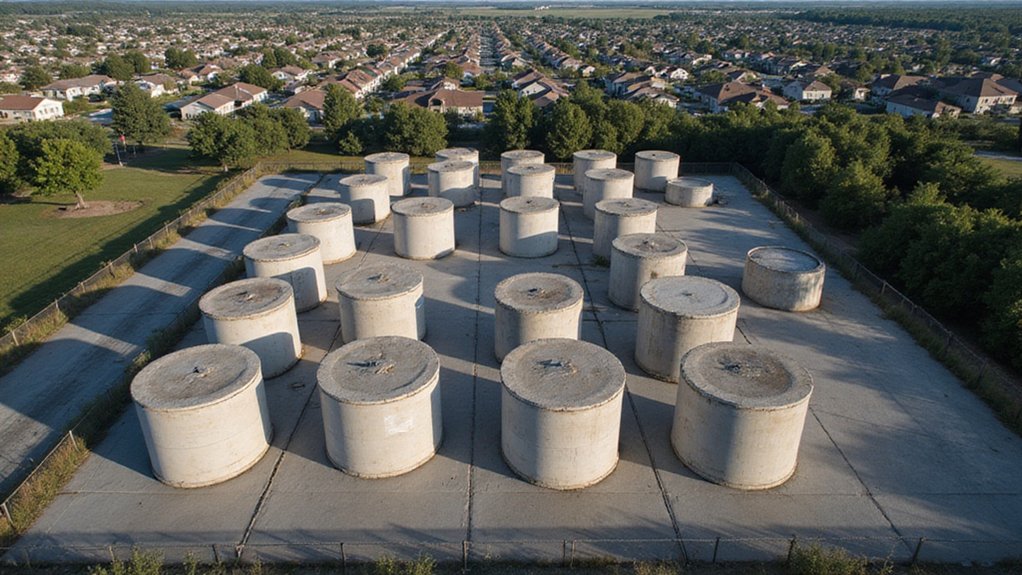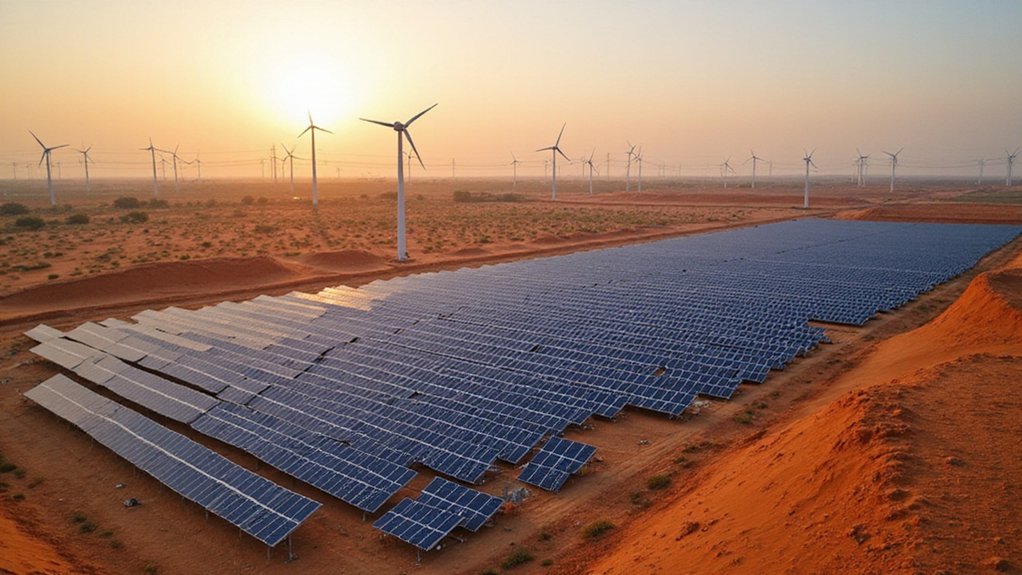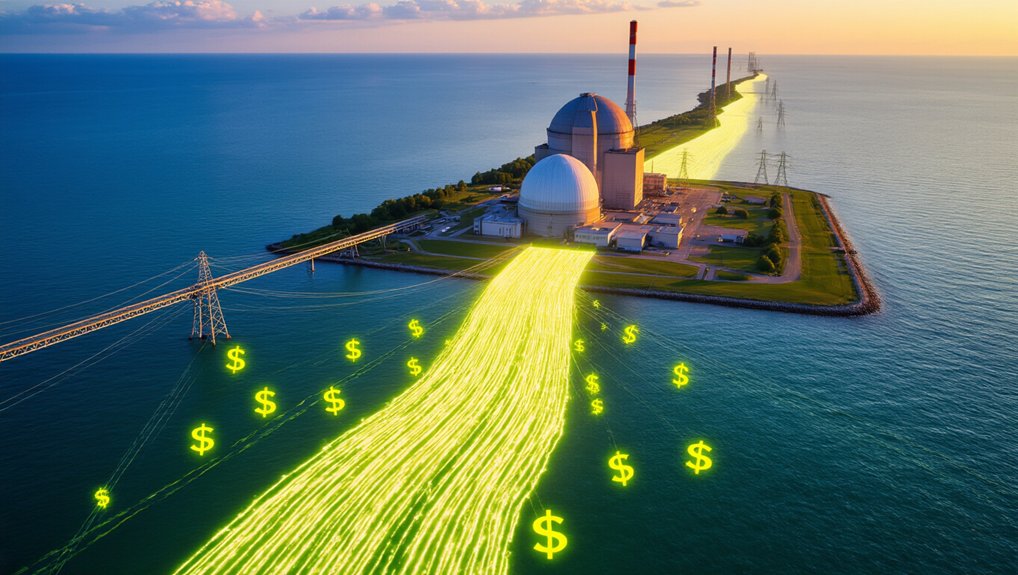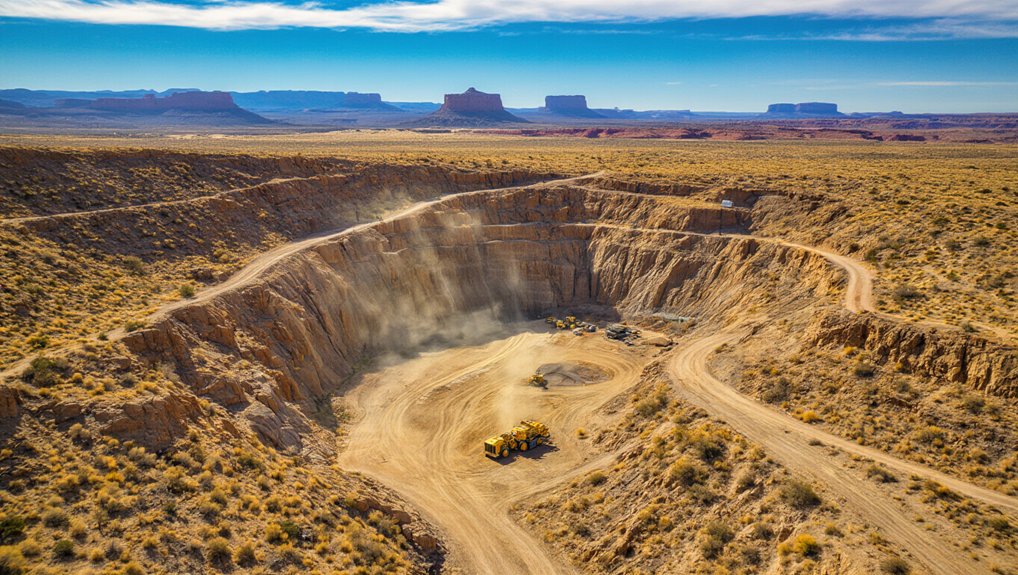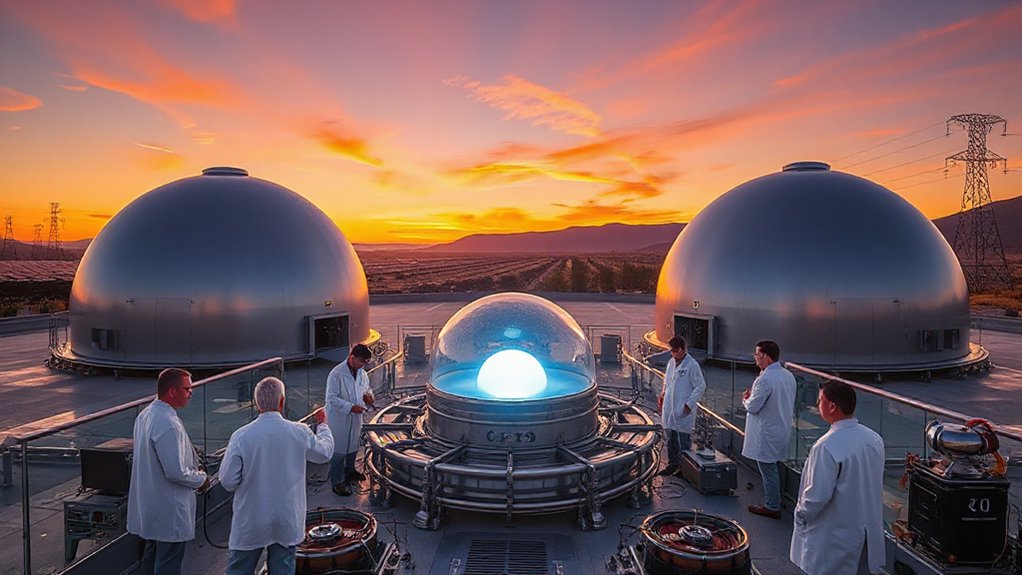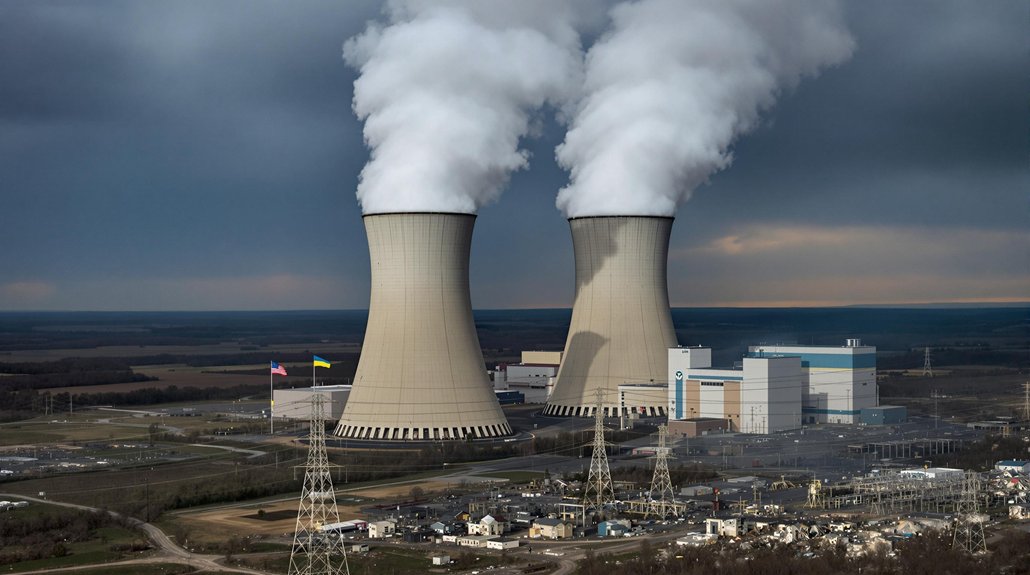While millions of Americans go about their daily lives, they’re often unaware that nuclear waste sits stored just miles from their homes. More than 90,000 tons of radioactive waste currently lies at over 100 sites across 39 states. About one-third of the U.S. population lives within 50 miles of these storage locations.
90,000 tons of radioactive waste lies within 50 miles of millions of Americans’ homes.
The waste comes mainly from nuclear power plants that generate 20% of America’s electricity. Cold War weapons production also created large amounts. This high-level waste consists primarily of spent nuclear fuel that’s extremely radioactive. Low-level waste includes contaminated equipment, clothing, and building materials from medical and industrial sources.
Most spent fuel sits in pools or dry steel-and-concrete casks right outside reactor buildings. Many of these 76 reactor sites are located near major cities. The waste stays where it’s created because the United States doesn’t have a central storage facility. Four licensed facilities in certain states handle low-level waste disposal.
Congress named Yucca Mountain, Nevada as the official repository in 1987. But political opposition killed the project in 2011 when funding stopped. The government has already spent more than 11 billion dollars on the Yucca Mountain project for construction and licensing efforts. No alternative site has been chosen. The Supreme Court heard arguments about temporary storage in 2025, but hasn’t decided yet.
This situation creates serious problems. The federal government has already paid $7.4 billion in settlements because it can’t meet storage commitments. Utilities charged customers fees for permanent disposal that never happened. Some of these costs get passed to ratepayers. Numerous lawsuits continue over the government’s broken promises.
The lack of permanent storage affects America’s energy future. Interest in nuclear power is growing as a low-carbon energy source. New smaller reactors could mean even more storage sites. But without solving the waste problem, getting approval for new plants becomes harder. Public trust remains low.
Security and monitoring vary at different sites. Some temporary structures don’t protect well against weather or flooding. Nine nuclear plants located within two miles of the ocean face additional risks from salt spray corrosion that could damage the steel canisters holding radioactive material. While current storage methods work for now, they weren’t designed as permanent solutions. The radioactive waste will remain dangerous for thousands of years, requiring a long-term answer that continues to elude policymakers.
References
- https://sgp.fas.org/crs/nuke/IF11201.pdf
- https://www.nrc.gov/waste/llw-disposal/licensing/locations.html
- https://www.livescience.com/planet-earth/nuclear-energy/theres-90-000-tons-of-nuclear-waste-in-the-us-how-and-where-is-it-stored
- https://crownschool.uchicago.edu/student-life/advocates-forum/our-silent-zombie-commercial-nuclear-waste-storage-united-states
- https://en.wikipedia.org/wiki/Yucca_Mountain_nuclear_waste_repository
